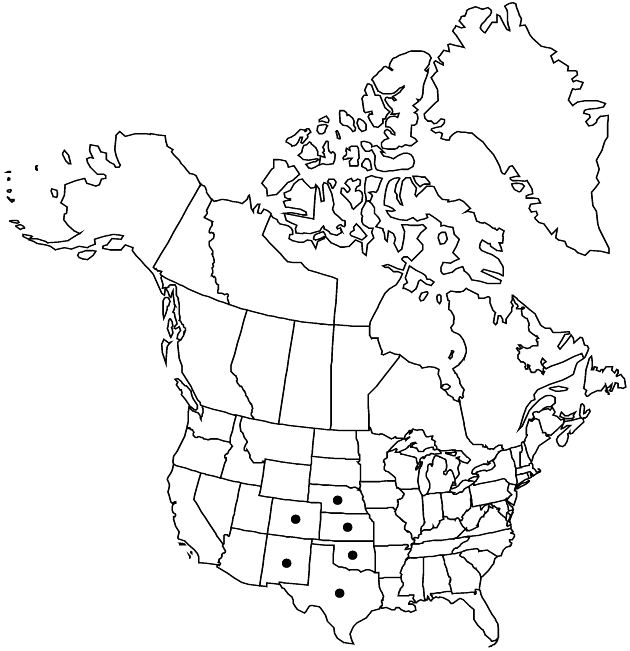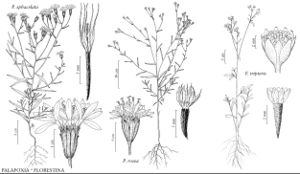Palafoxia sphacelata
Rhodora 48: 86. 1946.
Illustrated
Basionym: Stevia sphacelata Nuttall ex Torrey Ann. Lyceum Nat. Hist. New York 2: 214. 1827
Annuals, 10–90 cm. Stems usually proximally hispid, distally stipitate-glandular. Leaf-blades broadly to narrowly lanceolate, 30–90 × 3–20 mm. Involucres broadly to narrowly turbinate. Phyllaries 9–12+ × 1.5–3 mm, ± equal, ± scabrous to hispid and/or stipitate-glandular. Ray-florets 3–5; corollas 15–25 mm, laminae 5–12 mm. Disc-florets 15–35; corollas ± actinomorphic, 10–14 mm, throats ± funnelform, shorter than lobes. Cypselae 6–9 mm; pappus-scales of inner cypselae 7–9 mm. 2n = 24.
Phenology: Flowering summer–fall.
Habitat: Sandy soils
Elevation: 1000–1800 m
Distribution
Loading map...

Colo., Kans., Nebr., N.Mex., Okla., Tex., Mexico (Chihuahua)
Discussion
Selected References
None.
Lower Taxa
None.
... more about "Palafoxia sphacelata"
introrse +
connate +
herbaceous +
scarious +
absent +
hirsute +
papillate +
continuous +
decurrent +
broadly lanceolate;linear +
winged;ribbed;winged;ribbed +
1;15 +
stigmatic +
6;80 +
absent +
actinomorphic +
monomorphic +
dimorphic +
hairy +
6mm;9mm +
staminate +
straight +
scabrellous +
distinct +
proximal +
1;5 +
bisexual +
dispersed +
singly +
radiant +
indeterminate +
Present +
surrounding +
turbinate +
lanceolate +
3mm;20mm +
cauline +
2-carpellate +
inferior +
attached +
anatropous +
persistent +
fragile +
falling +
tough +
thick +
absent +
connate +
persistent +
distinct +
falling +
unequal +
equal +
Rhodora +
1946 +
pistillate +
absent +
fertile +
epaleate +
pitted +
knobby +
fibrous +
distinct +
scarious +
exalbuminous +
modifed +
1;2 +
Illustrated +
alternate +
branched +
erect +
2-branched +
papillate +
Palafoxia sphacelata +
Palafoxia +
species +
shorter +
cylindric +
shorter +
much longer than short +
annual +
